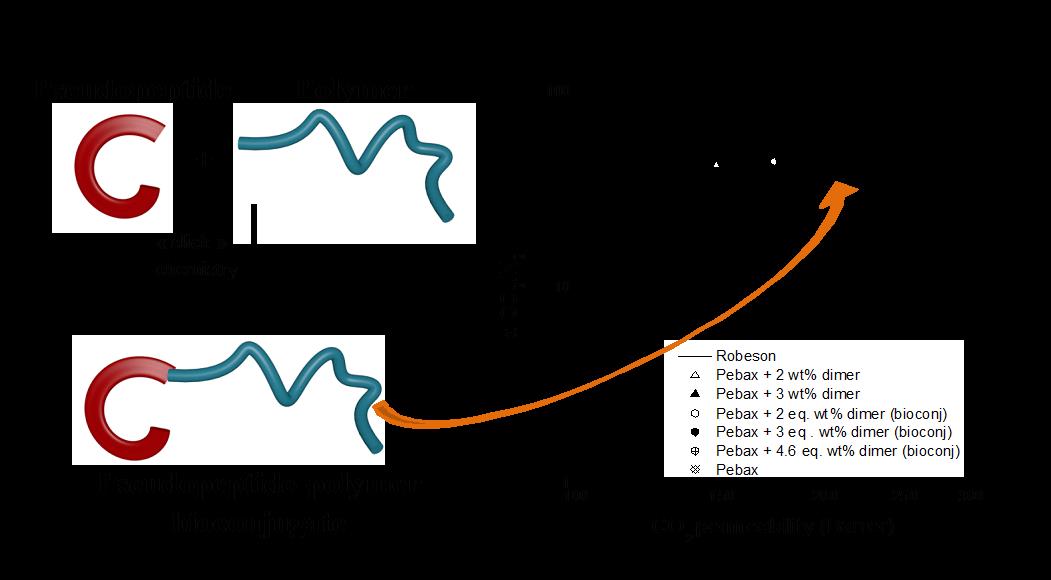
Anne Jonquieres
University of Lorraine, France
Title: Pseudopeptide-polymer bioconjugates as additives for CO2 separation membranes
Biography
Biography: Anne Jonquieres
Abstract
Carbone dioxide is one of the main greenhouse gases having serious detrimental effects on climate and health.1 During the last COP21 meeting in Paris, the yearly costs related to the CO2
In this work, pseudopeptide-polymer bioconjugates were synthesized in a controlled way by a "grafting-to" strategy based on CuAAC "click" chemistry of alkyne-modified pseudopeptides with an azido-functionalized PEO-based oligomer obtained by controlled radical polymerization (SET-LRP). Peptide-polymer conjugates are brand new structures, which are currently being investigated in various fields;3 but, to the best of our knowledge, they have never been used as additives to membranes and their potential impact on molecular separation has never been investigated.
These bioconjugates were assessed as original additives in a reference Pebax™ polymer membrane for CO2 capture. Pebax™ is a PolyEther Block Amide thermoplastic elastomer provided by the chemical company Arkema and already well known for its good performance for CO2 separation for two important gas mixtures (CO2/N2 and CO2/CH4).4-6 The first separation relates to the major industrial challenge of CO2 capture from combustion processes. The latter separation refers to the treatment of natural gas, which is another important issue for energy production.
An analysis of the sorption and permeation results according to the solution-diffusion model revealed the key features of the new additives for improving membrane performances for these challenging CO2 separations. Compared to pseudopeptides, the pseudopeptide-polymer bioconjugates greatly improved membrane permeability (×1.6) with a good constant selectivity for CO2 capture.
Image

Figure 1: Strong improvement of the membrane properties by pseudopeptide-polymer bioconjugates for CO2 capture
Publications
- US Department of Commerce (2016) Trends in Carbon Dioxide http://www.esrl.noaa.gov/gmd/ccgg/trends/ (accessed 2/12/, 2016).
- United Nations, Framework Convention on Climate Change (2015) COP21 Report.
- Shu JY, Panganiban B, Xu T, Annu Rev Phys Chem (2013) 64:631-657.
- Liu SL, Shao L, Chua ML, Lau CH, Wang H and Quan S (2013) Prog Polym Sci 38:1089–1120.
- Bondar VI, Freeman BD and Pinnau I (2000) J Polym Sci Part B Polym Phys 38:2051–2062.
- Rabiee H, Meshkat Alsadat S, Soltanieh M, Mousavi SA and Ghadimi A (2015) J Ind Eng Chem 27:223–239.
- Solimando X, Lherbier C, Babin J, Arnal-Herault C, Romero E, Acherar S, Jamart-Gregoire B, Barth D, Roizard D, Jonquieres A (2016) Polymer International 65:1464-1473. (This work)

